Fishes
Media

Species Types
Scientific Name
Noturus placidus
Description
The Neosho madtom is an endangered species in Missouri. It is our smallest catfish. It lives under rocks in riffles or runs in the clear waters of Spring River in Jasper County.
Media
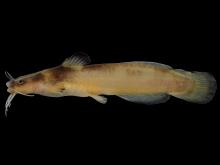
Species Types
Scientific Name
Noturus exilis
Description
The slender madtom is the most common madtom in the western and northern Missouri Ozarks, in small and medium-sized streams that have gravel bottoms, clear water, and permanent flow. It is scarce in the southern Ozarks.
Media
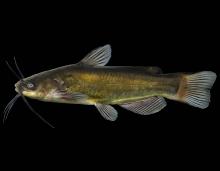
Species Types
Scientific Name
Ameiurus melas
Description
The black bullhead is widespread in Missouri. It is the most common bullhead catfish in north and west portions of the state. It has dusky or black chin barbels, and the edge of its tail fin is notched, not straight.
Media
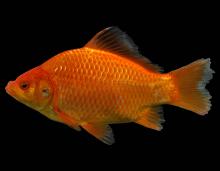
Species Types
Scientific Name
Carassius auratus
Description
Goldfish are not native to North America. They often escape into the wild from bait buckets and other causes, but there are few self-sustaining populations in Missouri.
Media
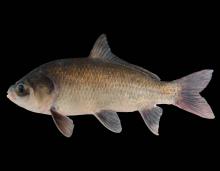
Species Types
Scientific Name
Ictiobus cyprinellus
Description
Missouri's largest sucker, the bigmouth buffalo occurs over much of the state and is most abundant in the Missouri River and its larger tributaries to the north.
Media

Species Types
Scientific Name
Cyprinus carpio
Description
The common carp is a "whopper" member of the minnow family. Originally from Asia, it was actively stocked in America in the 1800s and was firmly established in Missouri by 1895.
Media

Species Types
Scientific Name
Lepomis cyanellus
Description
The green sunfish is thick-bodied with a large mouth. The upper jaw extends to about the middle of the eye. It may occur in just about any pond, lake, or stream that is capable of supporting fish life.
Media
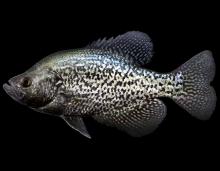
Species Types
Scientific Name
Pomoxis nigromaculatus
Description
The black crappie is a popular panfish. It is deep bodied and slab sided. The sides are silver with an irregular pattern of dark speckles. The upper jaw is long, reaching past the middle of the eye.
Media
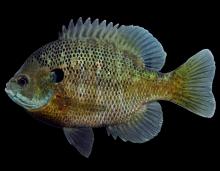
Species Types
Scientific Name
Lepomis macrochirus
Description
The bluegill is one of the most abundant and popular panfishes in North America. This deep-bodied, slab-sided sunfish sports a black “ear flap” extending from the edge of its gill cover.
Media

Species Types
Scientific Name
Micropterus dolomieu
Description
The smallmouth bass is a popular gamefish mostly found in cool, clear Ozark streams and large reservoirs in the Ozarks. It's less common in the upper Mississippi River and its principal prairie tributaries that have clear water and permanent flow.
See Also


Media

Species Types
Scientific Name
Amphiuma tridactylum
Description
The three-toed amphiuma is an eel-like, completely aquatic salamander. It has very small forelimbs and hind limbs, each with three tiny toes. In Missouri it’s found only in the Bootheel region.
Media

Species Types
Scientific Name
Siren intermedia nettingi
Description
The western lesser siren is an eel-like, aquatic salamander with external gills, small eyes, small forelimbs with four toes, and no hind limbs. In Missouri, it’s found mostly in the Bootheel and northward in counties near the Mississippi River.
About Fishes in Missouri
Missouri has more than 200 kinds of fish, more than are found in most neighboring states. Fishes live in water, breathe with gills, and have fins instead of legs. Most are covered with scales. Most fish in Missouri “look” like fish and could never be confused with anything else. True, lampreys and eels have snakelike bodies — but they also have fins and smooth, slimy skin, which snakes do not.





















